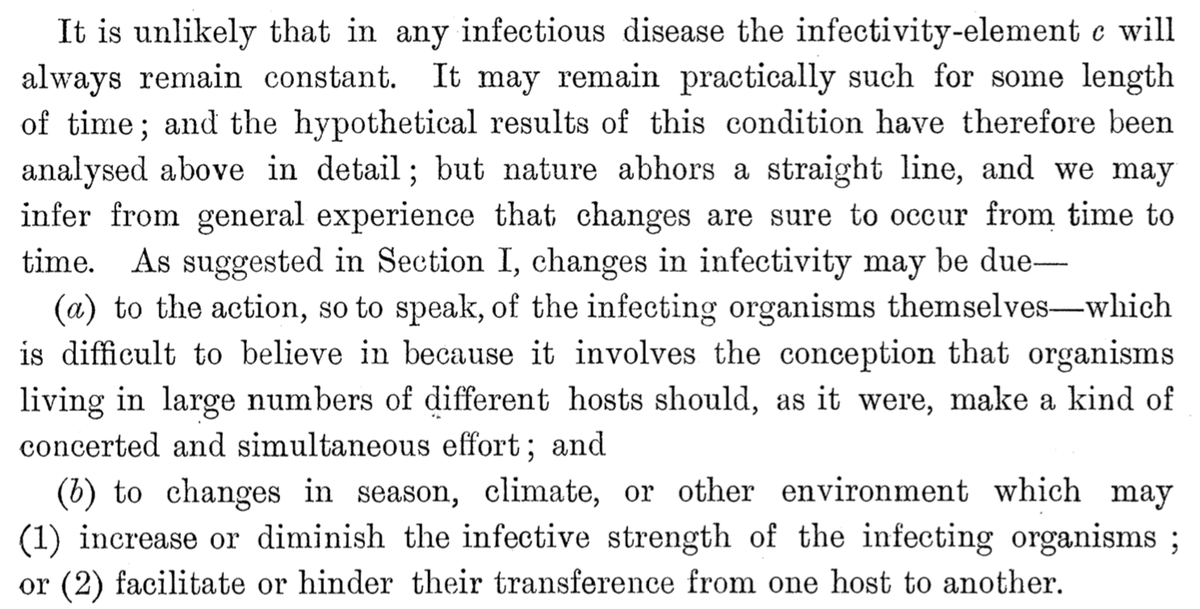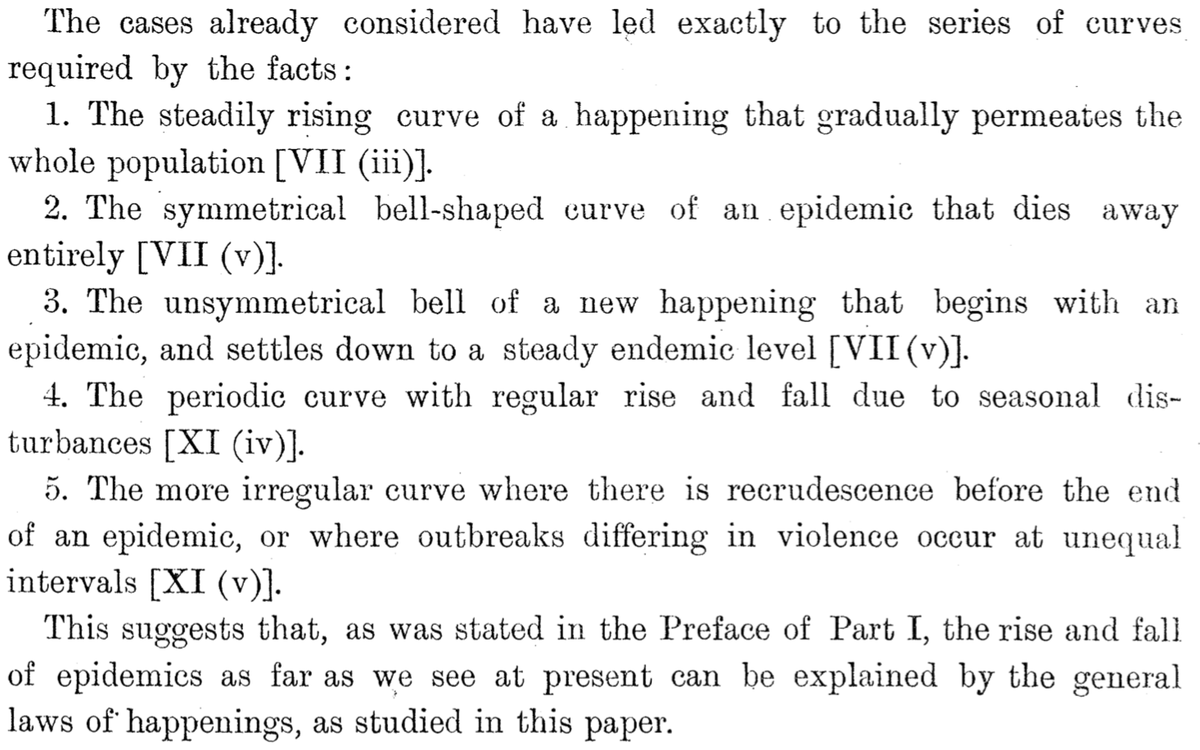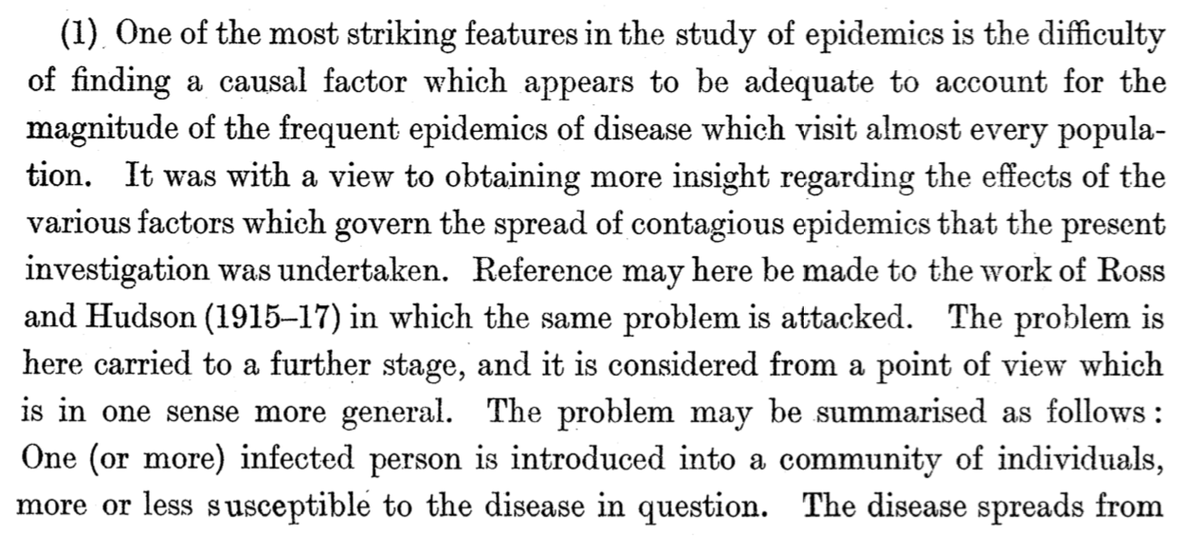I want to tell you a story about a mathematician you’ve probably never heard of, but whose work has helped shape a lot of what we’re taking about today... 1/
While researching my book, I learnt more about Hilda Hudson, who published her first research when she was aged 10 - in Nature: https://www.nature.com/articles/045189a0">https://www.nature.com/articles/... 2/
She then studied maths at Cambridge where she got first class marks in 1903. At the time, women weren& #39;t allowed to get degrees, so - despite matching the male student who came 7th in the year - her performance wasn’t included in the official listing. 3/
In 1916, Hudson worked on a pair of papers with Ronald Ross. These outlined mathematical models for & #39;laws of happenings& #39; - an early attempt at establishing a theory of epidemic dynamics ( https://royalsocietypublishing.org/doi/10.1098/rspa.1917.0015)">https://royalsocietypublishing.org/doi/10.10... 4/
The work would later inspire Kermack and McKendrick to outline their landmark susceptible-infectious-recovered model in 1927 ( https://royalsocietypublishing.org/doi/10.1098/rspa.1927.0118)">https://royalsocietypublishing.org/doi/10.10... 5/
In turn, the research that followed would eventually give rise to the field infectious disease modelling. And the mathematical thresholds in those early models would evolve into a simpler metric for contagion - the reproduction number. https://royalsocietypublishing.org/doi/full/10.1098/rstb.2014.0307">https://royalsocietypublishing.org/doi/full/... 6/
Yet because of the First World War, Hudson didn& #39;t publish any more work on epidemiology after those two papers. In 1917, she joined the Air Ministry to work on aircaft design - work for which she later got an OBE. 7/
Perhaps most remarkably, epidemiology and aeronautical engineering were effectively side projects - her main academic research was focused on pure maths, notably geometry: https://scholar.google.com/scholar?cluster=3117444465504600016&hl=en&as_sdt=2005&sciodt=0,5">https://scholar.google.com/scholar... 8/8

 Read on Twitter
Read on Twitter




